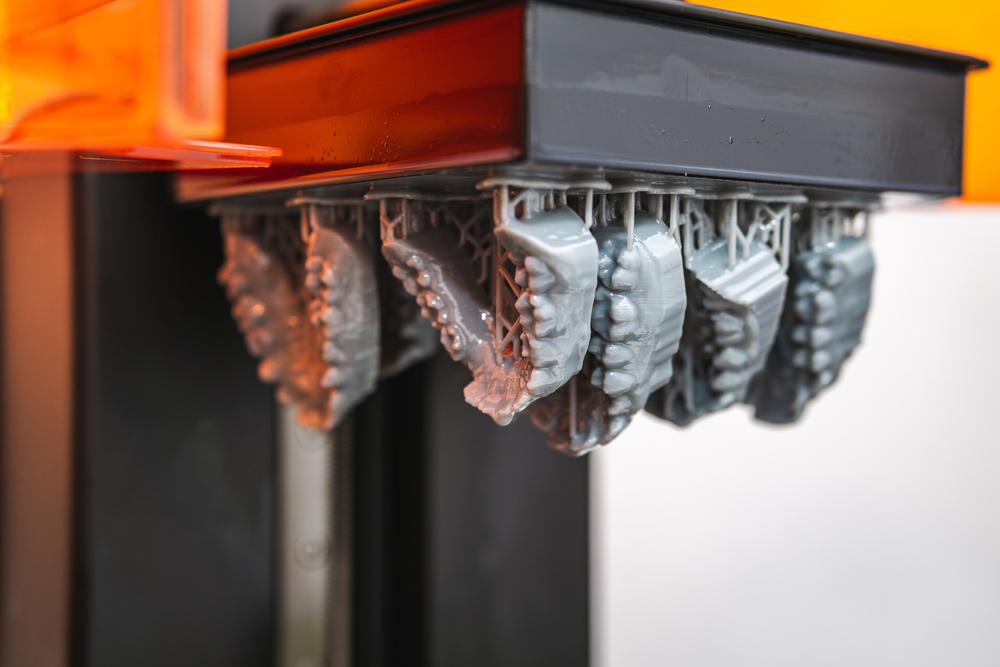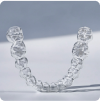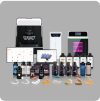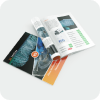
Aligning Dental 3D Printing Process with Different Business Models
3D printing technology is constantly advancing and popularity among dental practitioners and labs is growing. 3D printing dental products offer better patient service with faster turnaround times and are more accurate than traditional production methods. The digitalized workflow can also increase efficiencies such as producing multiple similar or different dental devices in parallel for patients. And when a patient loses a retainer or night guard, a new one can be instantly 3D printed again.
The challenge for most dentists and orthodontists is determining which 3D printing solution provides the best return on investment (ROI) and allows their company to easily scale. Modern 3D printing solutions are flexible and enable practitioners to have in-house, outsourced, or hybrid 3D printing solutions, easily aligning with different business models.

How Does Outsourcing 3D Printing Work?
Dental practitioners wanting to switch to digital dentistry with 3D printing without purchasing a 3D printer or learning how to use the technology can outsource to a dental lab. The outsourcing process involves the following:
- Practitioners take an intraoral scan of the patient’s mouth during an office visit to create a 3D digital impression and send it to the lab.
- The lab technician converts the digital oral impression into an accurate 3D printing digital dental model with support structures using 3D printing dental software. Digital dental models can be made for these devices and 3D printed:
- Aligners
- Surgical guides
- Night guards
- Occlusal splints
- Try ins
- The technician sends the 3D printing digital dental model or CAD file to the printer, producing an accurate dental appliance.
- For modern DLP printers, the technician performs the minimal post-processing steps before it is complete and ready to use. Depending on the 3D printing technology and the device created, post-processing may include removing support structures, washing, curing, and quick polishing.
- The 3D-printed dental device is sent back to the practitioner and delivered to the patient.
Dental labs provide faster turnaround times than traditional manufacturing labs. However, outsourcing can be days to weeks slower than same-day service with in-house 3D printing. Additionally, adjustments can prolong the overall turnaround time for the patient to receive a final product. The cost of outsourcing and other lab fees can affect the overall profit.
How Does In-House 3D Printing Work?
In-house 3D printing enables practitioners to oversee and control the entire workflow. An in-house production process consists of the following:
- Practitioners take an intraoral scan of the patient’s mouth and discuss same-day or next-day turnaround times with the patient.
- The technician converts the scan into a 3D printing digital dental model with the 3D printing software and sends the CAD file to the 3D printer
- The 3D printer produces the dental device.
- The technician removes the dental device from the build platform and performs post-processing steps such as removing minimal support structures, washing, curing, and quick polishing.
- The patient receives the dental device to try on. If there are any necessary adjustments, they can be made in the office and the device quickly reprinted.
Unlike outsourcing, in-house 3D printing allows for same-day turnaround. Long term, in-house 3D printing may be less expensive than outsourcing but requires a larger upfront cost to purchase the equipment. It also requires some minimal training for staff members that will be operating the software and machine.
How to Align the 3D Printing Process to Your Business Model
The 3D printing process is easily adaptable and a dental practice can adopt a hybrid process. Digitally designing CAD models from the oral impression scans can be challenging for offices that have a lean staff and cannot do the digital design. Full-service 3D printing companies, like LuxCreo, allow companies to outsource digitally designing models from intraoral scans and have the scans sent back to the dental office for 3D printing. It usually takes a one or two-day turnaround time when outsourcing the digital design process. A hybrid model can also include dental practices printing same-day products in-house and outsourcing larger production runs to a dental lab that uses the same advanced 3D printers and materials, eliminating the cost to scale 3D printing technology and materials for peak times.
LuxCreo’s innovative range of 3D printers, software bundles, and materials gives practitioners the flexibility to align the dental 3D printing process to many different business models in a way that best optimizes staff and equipment. Practitioners can find an integrated solution that provides a digitalized workflow while making it easy to scale operations. Switching to 3D printing dental solutions can be more efficient and cost-effective, improve patient satisfaction, and create better dental devices.
LuxCreo’s industry-leading 3D printing technology gives companies the flexibility to support different business models. To learn more about our processes, visit our contact page or call (650) 336-0888.
Subscribe to Our Newsletter
Be the first to get our latest updates and free trials!
Popular Resources
Follow Us
Featured Products

4D Aligner™
First Smart ActiveMemory™
Aligner

iLux Pro Dental Solution
Ultimate 1-Click Dental
Application Solution

LuxCloud Dental
Your One-stop Digital Dentistry
Platform






